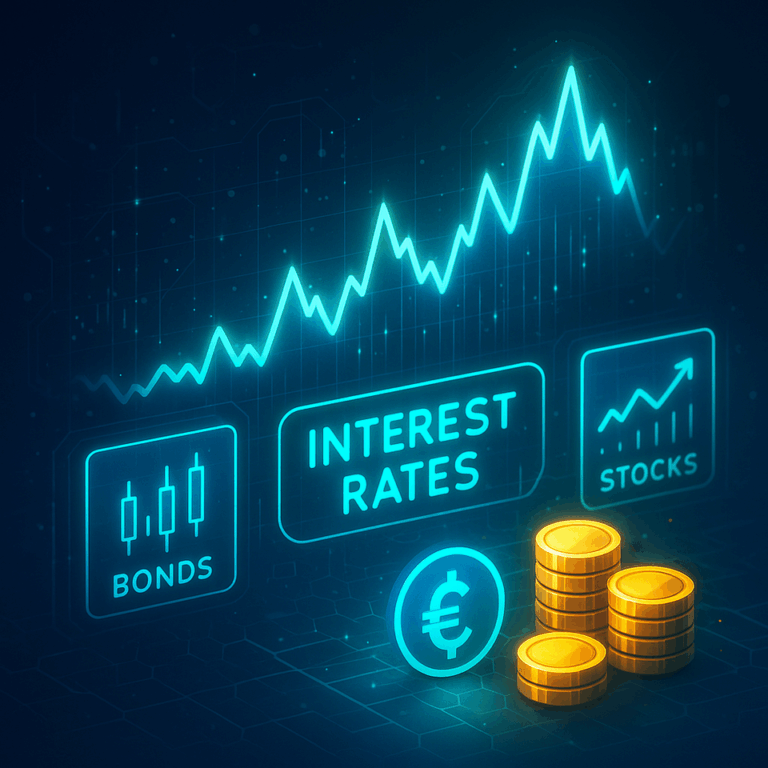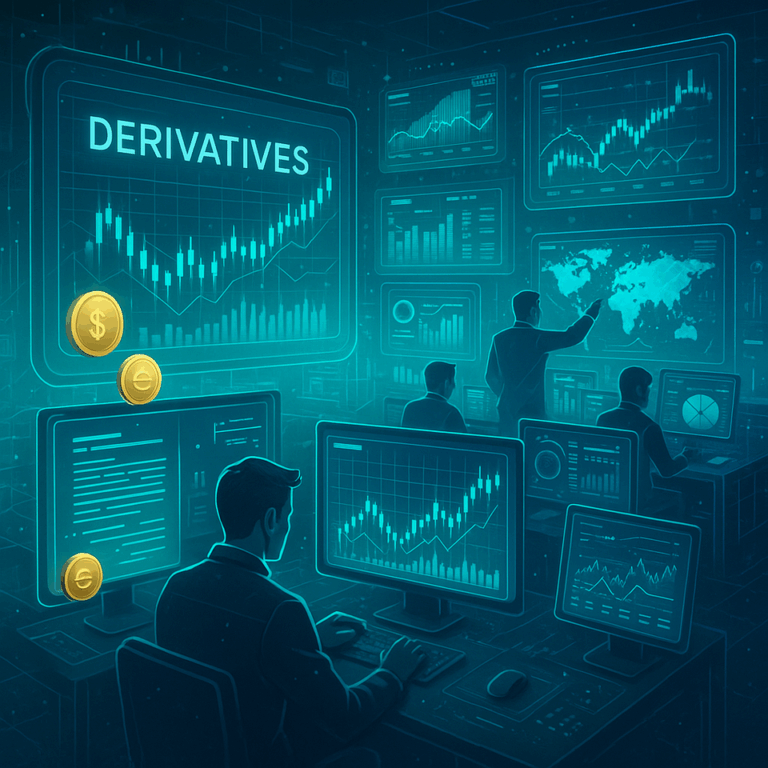After years of economic uncertainty, 2025 marks a phase of cautious optimism across the global financial landscape. Markets are adapting to a new era defined by moderate inflation, technological innovation, and stronger regulatory frameworks. Governments and institutions are working to maintain balance between sustainable growth and monetary discipline, fostering renewed confidence among investors and consumers alike.
The focus of global finance has shifted from crisis management to strategic transformation. Digitalization, energy transition, and demographic change are shaping economic structures, while emerging markets play a greater role in driving global demand and investment.
Key Economic Drivers in 2025
Monetary Policy and Interest Rate Stabilization
Central banks worldwide have adopted a more balanced approach to monetary policy. After a period of aggressive rate adjustments to curb inflation, many have reached equilibrium levels that support steady growth without overheating economies.
In the United States and Europe, interest rates have stabilized, leading to predictable lending conditions for consumers and businesses. Emerging economies have benefited from this global alignment, attracting new foreign capital and supporting domestic credit expansion.
The focus for policymakers in 2025 is long-term resilience—maintaining flexibility to respond to potential market shocks while avoiding excessive liquidity that could reignite inflationary pressures.
Technological Transformation and Productivity Growth
Technology continues to drive productivity gains across industries. Artificial intelligence, automation, and cloud computing are reshaping business operations, allowing companies to operate more efficiently while expanding into new markets.
The financial sector itself has undergone rapid digital transformation. AI-driven analytics, decentralized ledgers, and quantum computing are enhancing transaction security, risk management, and investment decision-making.
This wave of innovation has boosted productivity and reduced operational costs, but it also demands new regulations to manage data privacy, algorithmic accountability, and ethical standards.
The Green Economy and Energy Transition
Sustainability is a defining theme in 2025’s global economy. Governments and corporations are investing heavily in renewable energy, circular production systems, and carbon-neutral technologies.
These investments are not only addressing climate challenges but also creating jobs and driving capital flows into green industries. Energy companies are diversifying into clean power generation, while financial institutions are integrating environmental metrics into lending and investment criteria.
The transition to a green economy has become a cornerstone of both economic strategy and risk mitigation.
The Role of Emerging Markets
Emerging economies are central to global growth in 2025. Countries in Asia, Africa, and Latin America have become major hubs of innovation, manufacturing, and digital finance.
Favorable demographics, improved infrastructure, and increasing foreign direct investment (FDI) are strengthening these regions’ economic positions. Nations such as India, Indonesia, and Vietnam are experiencing rapid expansion driven by technology, renewable energy, and consumer markets.
At the same time, regional integration initiatives are fostering intra-continental trade and financial cooperation. African nations, through the African Continental Free Trade Area (AfCFTA), are creating unified markets that enhance stability and attract global investors.
Financial Markets and Investment Trends
Global financial markets in 2025 are characterized by diversification, data-driven strategies, and a strong emphasis on risk management.
Equity Markets
Stock markets have shown resilience, supported by robust corporate earnings and steady global demand. Technology, clean energy, and healthcare sectors continue to outperform, while industrial and consumer sectors benefit from stable global supply chains.
Investors are increasingly prioritizing companies with transparent governance, sustainability records, and long-term innovation strategies.
Bond Markets
Fixed-income investments have regained appeal as interest rates stabilize. Government and corporate bonds are providing predictable returns, especially in economies with low default risks and strong fiscal policies.
Sovereign green bonds have become a major trend, attracting both institutional and retail investors seeking stable yields with environmental impact.
Commodities and Currencies
Commodity prices have normalized after previous volatility. Energy commodities are adjusting to renewable transitions, while precious metals maintain value as safe-haven assets.
Currency markets are relatively stable, supported by better trade balances and synchronized global growth. The U.S. dollar remains dominant, but regional digital currencies are gaining momentum in Asia and the Middle East.
The Expansion of Digital Finance
The digitalization of money is accelerating financial inclusion and efficiency worldwide. Central Bank Digital Currencies (CBDCs) are now operational in several major economies, streamlining cross-border payments and reducing transaction costs.
Fintech platforms continue to disrupt traditional banking, offering accessible investment tools, micro-loans, and AI-powered advisory services. Decentralized finance (DeFi) remains relevant but increasingly integrated into regulated frameworks to ensure transparency and consumer protection.
The result is a more inclusive global financial system, where individuals and small businesses have unprecedented access to sophisticated financial services.
Global Trade and Geopolitical Dynamics
Trade relationships in 2025 are more regionalized yet interconnected. While global trade volumes continue to grow, supply chains have become more localized to reduce dependency and geopolitical risk.
Technological self-sufficiency and resource security are strategic priorities for many nations. This shift has led to greater investment in domestic manufacturing and innovation ecosystems, promoting resilience against global disruptions.
Geopolitical tensions persist in some areas, particularly related to technology and energy resources, but diplomatic cooperation and economic interdependence continue to mitigate large-scale instability.
The Social Dimension of Global Finance
Economic growth in 2025 is increasingly measured by inclusion and equity. Policymakers and financial institutions are emphasizing financial literacy, access to credit, and workforce adaptation.
Automation and AI are transforming labor markets, requiring education systems to focus on digital skills and lifelong learning. Governments are implementing policies to support job transitions, encourage entrepreneurship, and reduce inequality.
This inclusive approach ensures that financial progress benefits broader segments of society, not just institutional investors or major corporations.
Risks and Uncertainties
Despite overall stability, the global economy faces ongoing risks that require careful monitoring:
-
Geopolitical Conflicts: Regional instability could disrupt trade and capital flows.
-
Climate Risks: Natural disasters and climate-related disruptions continue to threaten supply chains and agriculture.
-
Cybersecurity: The rise of digital finance increases vulnerability to data breaches and system failures.
-
Debt Pressures: High public and private debt in certain regions could pose long-term financial constraints.
Maintaining robust governance, diversification, and technological safeguards will be essential to mitigating these risks.
The Outlook for the Coming Decade
Looking beyond 2025, global finance is on a path toward increased transparency, innovation, and resilience. The integration of sustainable finance, digital assets, and AI-driven decision-making will continue to shape economic evolution.
Financial institutions are becoming more adaptive, leveraging technology to meet consumer needs while ensuring regulatory compliance. Governments are prioritizing collaboration over confrontation, fostering an environment conducive to growth and stability.
The next decade promises a financial ecosystem that is more interconnected, data-driven, and inclusive than ever before.
Conclusions
The global financial landscape in 2025 reflects a world striving for balance—between innovation and regulation, growth and sustainability, technology and human expertise.
With stable interest rates, expanding digital finance, and increased focus on sustainability, the financial system is evolving into a more efficient and accessible global network.
Investors, policymakers, and consumers who embrace adaptability, education, and long-term thinking are best positioned to thrive in this era of transformation.
The future of finance is not defined by volatility but by progress—where innovation serves stability and economic growth becomes more equitable and sustainable for all.







